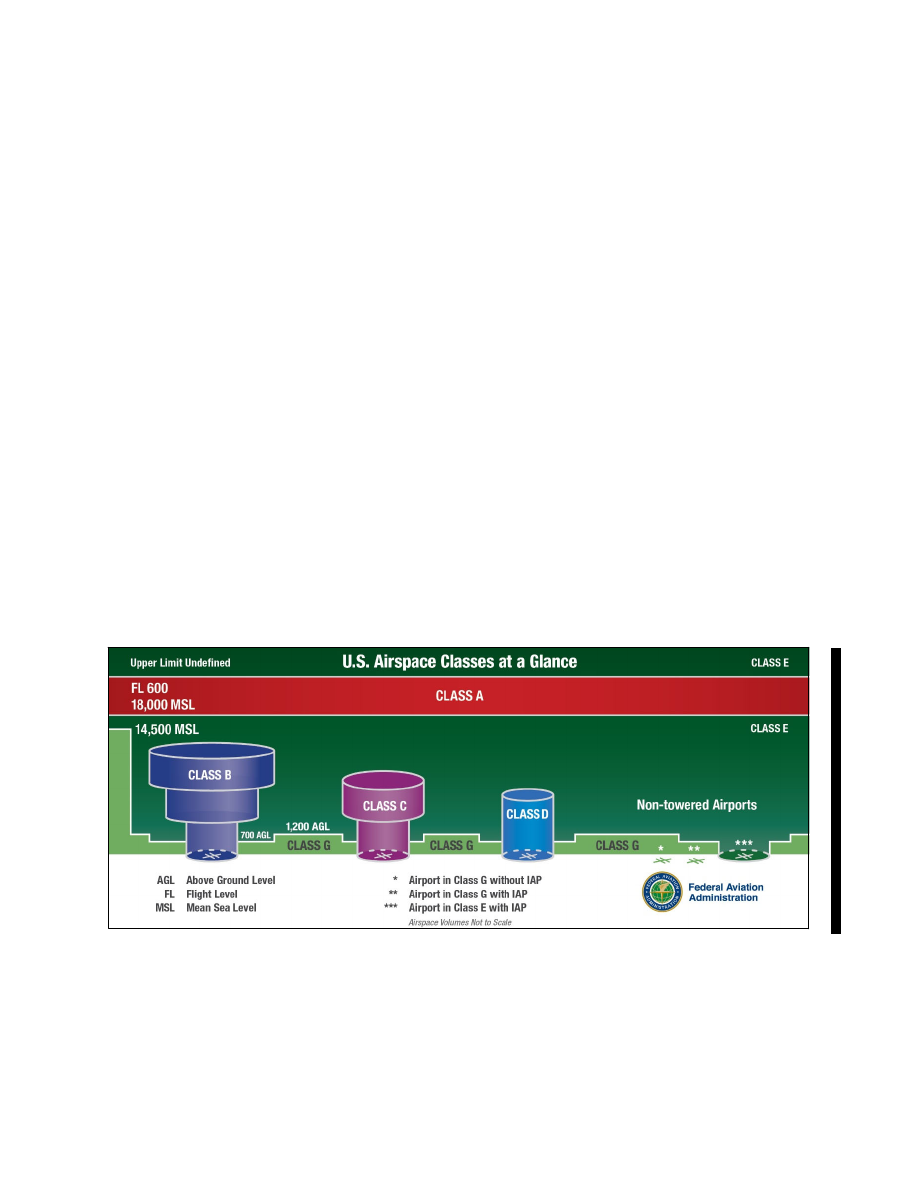
4/20/23
AIM
Section 2. Controlled Airspace
3
−
2
−
1. General
a. Controlled Airspace.
A generic term that covers the different classification of airspace (Class A, Class B,
Class C, Class D, and Class E airspace) and defined dimensions within which air traffic control service is
provided to IFR flights and to VFR flights in accordance with the airspace classification. (See FIG 3
1.)
b. IFR Requirements.
IFR operations in any class of controlled airspace requires that a pilot must file an
IFR flight plan and receive an appropriate ATC clearance.
c. IFR Separation.
Standard IFR separation is provided to all aircraft operating under IFR in controlled
airspace.
d. VFR Requirements.
It is the responsibility of the pilot to ensure that ATC clearance or radio
communication requirements are met prior to entry into Class B, Class C, or Class D airspace. The pilot retains
this responsibility when receiving ATC radar advisories. (See 14 CFR Part 91.)
e. Traffic Advisories.
Traffic advisories will be provided to all aircraft as the controller’s work situation
permits.
f. Safety Alerts.
Safety Alerts are mandatory services and are provided to ALL aircraft. There are two types
of Safety Alerts:
1. Terrain/Obstruction Alert.
A Terrain/Obstruction Alert is issued when, in the controller’s judgment,
an aircraft’s altitude places it in unsafe proximity to terrain and/or obstructions; and
2. Aircraft Conflict/Mode C Intruder Alert.
An Aircraft Conflict/Mode C Intruder Alert is issued if the
controller observes another aircraft which places it in an unsafe proximity. When feasible, the controller will offer
the pilot an alternative course of action.
FIG 3
−
2
−
1
Airspace Classes
g. Ultralight Vehicles.
No person may operate an ultralight vehicle within Class A, Class B, Class C, or Class
D airspace or within the lateral boundaries of the surface area of Class E airspace designated for an airport unless
that person has prior authorization from the ATC facility having jurisdiction over that airspace. (See 14 CFR Part
103.)
h. Unmanned Free Balloons.
Unless otherwise authorized by ATC, no person may operate an unmanned
free balloon below 2,000 feet above the surface within the lateral boundaries of Class B, Class C, Class D, or
Class E airspace designated for an airport. (See 14 CFR Part 101.)
Controlled Airspace
3
−
2
−
1